Understanding the Waste Collection Monument: A Symbol of Sustainability
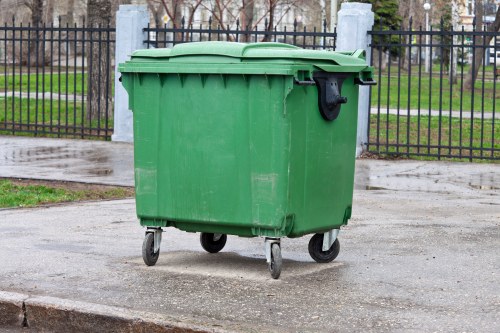
The Waste Collection Monument stands as a powerful symbol in our communities, representing the collective effort to manage and reduce waste effectively. This monument not only honors those who work tirelessly in waste management but also serves as a reminder of the importance of sustainability.
In recent years, waste management has become a critical issue globally. With increasing population and consumption, the amount of waste generated has surged, making efficient waste collection systems more important than ever. The Waste Collection Monument embodies this necessity by emphasizing the need for organized and responsible waste disposal methods.
Designed with both functionality and aesthetics in mind, the monument integrates various elements that highlight the significance of waste collection. From its structural design to the materials used, every aspect is carefully considered to promote environmental awareness and encourage community participation.
The Significance of the Waste Collection Monument

The Waste Collection Monument serves multiple purposes in society. Primarily, it acts as an educational tool, informing the public about the importance of proper waste management. By showcasing the different stages of waste collection and processing, the monument provides valuable insights into how waste is transformed into a resource.
Additionally, the monument is a tribute to the individuals and organizations dedicated to waste management. These professionals play a crucial role in maintaining the cleanliness and health of our environments, and the monument honors their contributions.
The aesthetic aspect of the monument also cannot be understated. Its design often incorporates recycled materials, symbolizing the potential for waste to be repurposed and reused. This not only reduces the environmental footprint but also inspires innovative approaches to waste management.
Components of the Waste Collection Monument
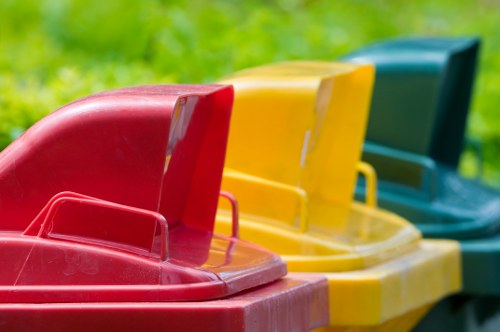
The monument comprises several key components that collectively convey its message. These include:
- Recycled Materials: Utilizing materials that have been repurposed to demonstrate sustainability.
- Interactive Displays: Engaging elements that educate visitors about waste collection processes.
- Sculptural Elements: Artistic features that symbolize different aspects of waste management.
Each component is thoughtfully integrated to create a cohesive narrative about the importance of waste collection and its impact on the environment.
The use of interactive displays allows visitors to engage directly with the monument, fostering a deeper understanding of waste management practices. This hands-on experience is crucial in promoting behavioral changes towards more sustainable living.
Impact on the Community

The presence of the Waste Collection Monument has a profound impact on the surrounding community. It fosters a sense of responsibility and encourages individuals to take an active role in minimizing waste.
Community engagement initiatives, such as workshops and educational programs held at the monument site, further enhance its role as a center for sustainability. These programs provide residents with the knowledge and tools needed to implement effective waste management practices in their daily lives.
Moreover, the monument serves as a focal point for environmental campaigns and events, uniting the community in collective efforts to protect and preserve the environment.
Promoting Sustainable Practices

One of the primary goals of the Waste Collection Monument is to promote sustainable practices. This includes encouraging recycling, composting, and reducing single-use plastics.
The monument's design often incorporates elements that demonstrate sustainable living, such as composting stations and recycling bins. These features not only serve practical purposes but also act as constant reminders of the importance of minimizing waste.
By showcasing sustainable practices, the monument inspires individuals and businesses alike to adopt eco-friendly habits, thereby contributing to a healthier planet.
Design and Architecture
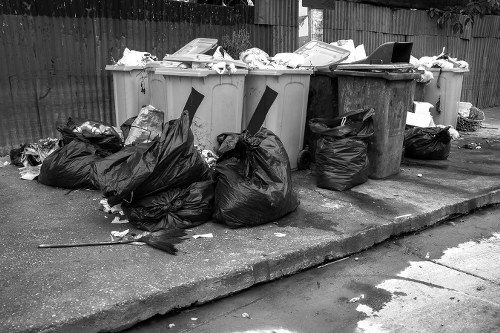
The architecture of the Waste Collection Monument is a blend of functionality and artistic expression. Architects and designers carefully select materials that reflect the monument's environmental message, often using recycled or sustainably sourced materials.
The structural design typically incorporates elements that symbolize the waste management process. For example, circular shapes may represent the recycling loop, while flowing lines could signify the movement of waste through collection and processing stages.
Lighting and landscaping are also integral parts of the design, enhancing the monument's aesthetic appeal and making it a welcoming space for visitors.
Environmental Integration
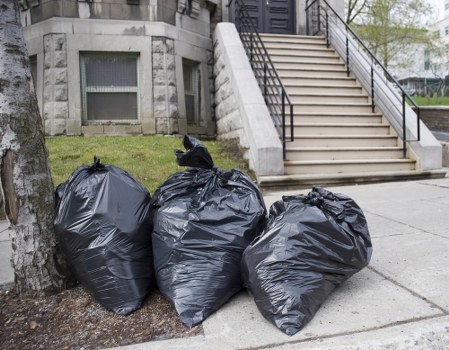
Integrating the monument into its natural surroundings is essential for emphasizing its environmental message. This involves careful planning to ensure that the monument complements the local landscape and contributes positively to the ecosystem.
- Green Spaces: Incorporating gardens and plant life around the monument to promote biodiversity.
- Energy Efficiency: Utilizing solar panels and other sustainable energy sources to power lighting and interactive displays.
- Water Management: Implementing rainwater harvesting systems to manage runoff and support vegetation.
By harmonizing with the environment, the Waste Collection Monument becomes not just a structure, but a living part of the community's ecological fabric.
Educational Role
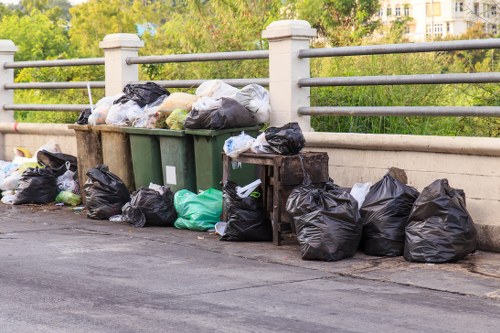
Education is a cornerstone of the Waste Collection Monument's mission. Through various educational programs and exhibits, the monument provides valuable information about waste management and its impact on the environment.
Interactive exhibits allow visitors to learn about the different types of waste, the recycling process, and the importance of reducing, reusing, and recycling. These educational tools are designed to cater to all age groups, making the information accessible and engaging for everyone.
School groups and educational tours are a common feature at the monument, providing students with hands-on learning experiences that reinforce classroom teachings about sustainability and environmental stewardship.
Community Workshops
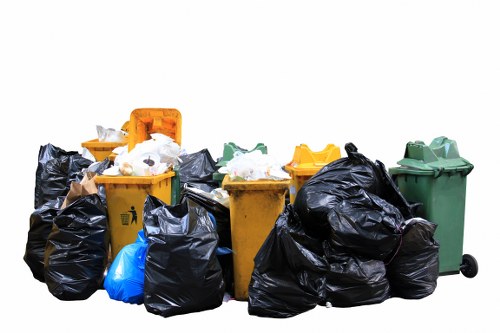
Community workshops held at the Waste Collection Monument offer practical guidance on waste management practices. Topics often include:
- Recycling Techniques
- Composting at Home
- Reducing Household Waste
- Upcycling Projects
- Environmental Advocacy
These workshops provide attendees with actionable steps they can take to improve their waste management habits, fostering a proactive approach to sustainability within the community.
Local Relevance: Nearby Areas
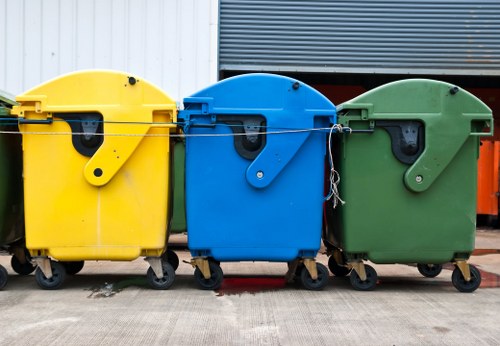
The Waste Collection Monument is strategically located near several key areas that enhance its accessibility and relevance. Some of the closest areas include:
- Green Park: A large urban park that promotes eco-friendly activities and hosts sustainability events.
- Sunrise Recycling Center: A facility dedicated to processing and recycling various types of waste.
- Eco University: An educational institution offering programs in environmental science and waste management.
- Riverfront Plaza: A public space that emphasizes water conservation and eco-friendly design.
- Community Gardens: Local gardens that encourage composting and organic waste practices.
- Solar Power Plant: An area showcasing renewable energy sources and sustainable power generation.
- Urban Farm: A farm that integrates waste recycling and sustainable agriculture practices.
- Recycling Market: A marketplace where recycled goods are sold and upcycled products are showcased.
- Environmental Library: A library specializing in resources about sustainability and waste management.
- Eco Art Gallery: An art gallery featuring works made from recycled materials and waste products.
- Clean Streets Initiative Office: The administrative center for local waste management programs and policies.
- Waste Education Center: A center dedicated to educating the public about effective waste management strategies.
- Composting Facility: A site where organic waste is processed into compost for use in agriculture and gardening.
- Bike Recycling Station: A facility focused on recycling bicycle parts and promoting sustainable transportation.
Challenges in Waste Collection
Despite advancements in waste management, several challenges persist. These include:
- Increasing Waste Volume: The growing population leads to more waste, straining collection systems.
- Recycling Contamination: Improper sorting of recyclables reduces the efficiency of recycling processes.
- Financial Constraints: Limited funding can hinder the development and maintenance of waste collection infrastructure.
- Public Awareness: Lack of awareness and education can lead to ineffective waste management practices.
- Technological Limitations: Outdated technology may not support efficient waste collection and processing.
Addressing these challenges requires a collaborative effort between government, businesses, and the community to implement effective solutions and promote sustainable practices.
Innovative Solutions
To overcome the challenges in waste collection, innovative solutions are being developed:
- Smart Waste Bins: Equipped with sensors to monitor fill levels and optimize collection routes.
- Automated Sorting Systems: Enhancing the efficiency and accuracy of waste sorting processes.
- Public Awareness Campaigns: Educating the community about the importance of proper waste management.
- Incentive Programs: Encouraging individuals to reduce, reuse, and recycle through rewards and recognition.
- Collaborative Partnerships: Working with businesses and organizations to develop sustainable waste management practices.
These solutions not only improve the efficiency of waste collection but also foster a culture of sustainability within the community.
Future of Waste Collection Monuments
The future of Waste Collection Monuments looks promising, with ongoing advancements in design and technology. Future monuments are expected to incorporate more interactive and digital elements, providing real-time data on waste collection and recycling efforts.
Additionally, there is a growing trend towards integrating green technologies, such as solar panels and rainwater harvesting systems, making the monuments more self-sufficient and environmentally friendly.
As awareness about sustainability continues to rise, Waste Collection Monuments will play an increasingly important role in promoting eco-friendly practices and inspiring future generations to prioritize waste management.
Community Collaboration
Community collaboration is key to the success and longevity of Waste Collection Monuments. Engaging local residents, businesses, and organizations ensures that the monument remains a relevant and integral part of the community.
- Volunteer Programs: Encouraging community members to participate in maintenance and educational activities.
- Local Partnerships: Collaborating with businesses to support waste management initiatives and fund monument upkeep.
- Public Events: Hosting events that bring the community together to celebrate and promote sustainable practices.
By fostering a sense of ownership and pride, the Waste Collection Monument becomes a shared asset that benefits the entire community.
Conclusion
The Waste Collection Monument is more than just a physical structure; it is a beacon of hope and a testament to the collective effort required to manage our waste responsibly. By educating the public, honoring waste management professionals, and promoting sustainable practices, the monument plays a crucial role in shaping a greener future.
As communities continue to face the challenges of increasing waste generation, the Waste Collection Monument serves as a constant reminder of the importance of effective waste management and the impact it has on our environment.
Investing in such monuments not only enhances community awareness but also fosters a culture of sustainability that is essential for the well-being of our planet.
Frequently Asked Questions
- What is the purpose of the Waste Collection Monument?
The Waste Collection Monument serves to educate the public about waste management, honor those in the industry, and promote sustainable practices within the community.
- How does the monument promote sustainability?
The monument uses recycled materials, features interactive educational displays, and incorporates sustainable technologies to demonstrate and encourage eco-friendly habits.
- Can schools visit the Waste Collection Monument?
Yes, the monument is a popular destination for educational tours and offers programs tailored for students to learn about waste management and sustainability.
- What are some features of the monument's design?
The design includes recycled materials, interactive exhibits, sculptural elements, and green technologies like solar panels and rainwater harvesting systems.
- How can the community get involved with the monument?
Community members can participate in workshops, volunteer for maintenance activities, attend events, and engage in local sustainability initiatives promoted by the monument.
